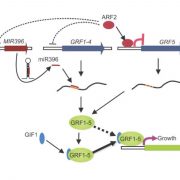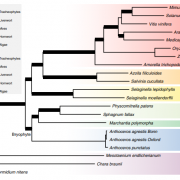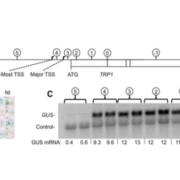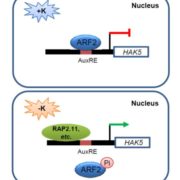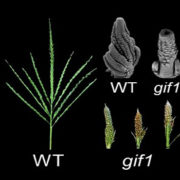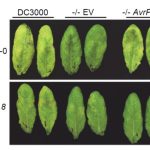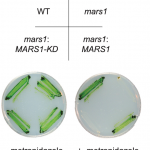The cis-regulatory codes of response to combined heat and drought stress (bioRxiv)
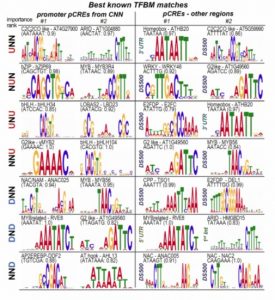 As sessile organisms, plants must not only respond to a single stress, but multiple stresses at the same time. To understand the DNA regulatory elements that mediate the transcriptional response to heat, drought and combined heat and drought stress, Azodi et al. utilized the known transcription factor binding motifs (TFBM) and enrichment based putative cis-regulatory elements (pCREs) to define the cis-regulatory codes. The authors found that the genes responsive to combined heat and drought stress have unique regulatory codes that are needed to fine tune the transcriptional response. By using a deep learning algorithm, convolutional neural networks (CNNs), the authors could predict and improve the patterns of response to single and combined stress. They also summarize that combining pCREs identified outside of the promoter region are better predictive response to single/combined stresses. In conclusion, they highlight the complexity of the identified cis-regulatory codes to characterize some of the most important pCREs in response to single/combined stress. The approaches used in this study could be used to understand the regulatory network of developmental and stress induced responses in other organisms. (Summary by Min May Wong) bioRxiv 10.1101/2020.02.28.969261
As sessile organisms, plants must not only respond to a single stress, but multiple stresses at the same time. To understand the DNA regulatory elements that mediate the transcriptional response to heat, drought and combined heat and drought stress, Azodi et al. utilized the known transcription factor binding motifs (TFBM) and enrichment based putative cis-regulatory elements (pCREs) to define the cis-regulatory codes. The authors found that the genes responsive to combined heat and drought stress have unique regulatory codes that are needed to fine tune the transcriptional response. By using a deep learning algorithm, convolutional neural networks (CNNs), the authors could predict and improve the patterns of response to single and combined stress. They also summarize that combining pCREs identified outside of the promoter region are better predictive response to single/combined stresses. In conclusion, they highlight the complexity of the identified cis-regulatory codes to characterize some of the most important pCREs in response to single/combined stress. The approaches used in this study could be used to understand the regulatory network of developmental and stress induced responses in other organisms. (Summary by Min May Wong) bioRxiv 10.1101/2020.02.28.969261
[altmetric doi=”10.1101/2020.02.28.969261″ details=”right” float=”right”]


